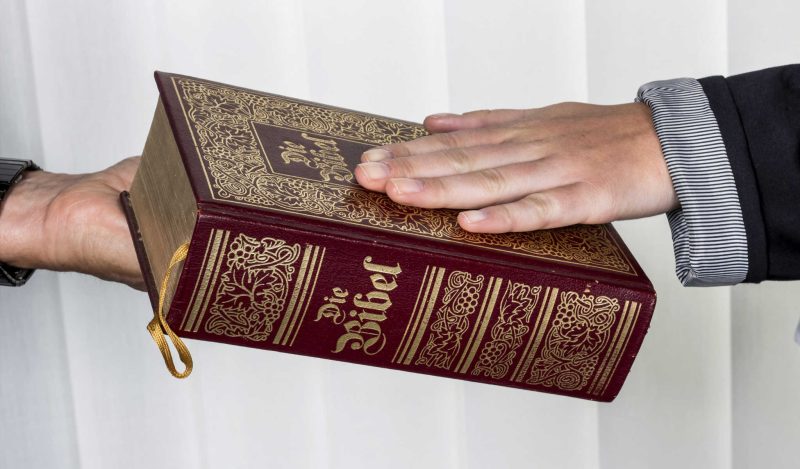MAiD
Disabled Canadians increasingly under pressure to opt for euthanasia during routine doctor visits

From LifeSiteNews
Inclusion Canada reported to Parliament that disabled Canadians feeling pressure to choose assisted suicide is a ‘weekly’ occurrence due to MAiD expansion to the non-terminally ill.
Inclusion Canada CEO Krista Carr revealed that many disabled Canadians are being pressured to end their lives with euthanasia during routine medical appointments.
During an October 8 session of the Parliamentary Finance Committee, Carr, an advocate against Medical Assistance in Dying (MAiD), explained that Canada’s expansion of MAiD to the non-terminally ill has led to people with disabilities being pressured to end their lives during unrelated medical visits.
“Since the bill was brought in around Track 2 MAID … that has certainly changed people’s interactions with the healthcare system,” she explained, referring to the 2021 expansion that allowed those who are chronically ill but not terminally ill to be euthanized.
“People with disabilities are now very much afraid in many circumstances to show up in the health care system with regular health concerns, because often MAID is suggested as a solution to what is considered to be intolerable suffering,” she revealed.
WOW
“People with disabilities are now very much afraid in many circumstances to show up in the healthcare system with regular concerns. Often MAID is suggested as a solution.
“Since the bill was brought in around Track 2 MAID…that has certainly changed people’s interactions… pic.twitter.com/kjsVk8UbAK
— Garnett Genuis (@GarnettGenuis) October 16, 2025
Conservative Member of Parliament Garnett Genuis questioned how often people with disabilities are encouraged to have themselves euthanatized. Carr responded that this is a “weekly” occurrence for Canadians living with disabilities.
Carr warned that Canadians living with disabilities are disproportionately targeted by the MAiD expansion because their medical conditions leave them vulnerable to the euthanasia mindset within hospitals. Additionally, according to Carr, “poverty” is considered “intolerable suffering,” making a person eligible to receive MAiD.
Carr’s statement supports internal documents from Ontario doctors in 2024 that revealed Canadians are choosing euthanasia because of poverty and loneliness, not as a result of a terminal illness.
In one case, an Ontario doctor revealed that a middle-aged worker, whose ankle and back injuries had left him unable to work, felt that the government’s insufficient support was “leaving (him) with no choice but to pursue MAiD.”
Other cases included an obese woman who described herself as a “useless body taking up space,” which one doctor argued met the requirements for MAiD because obesity is “a medical condition which is indeed grievous and irremediable.”
Overall, 116 of Ontario’s 4,528 euthanasia deaths in 2023 involved non-terminal patients, with many of those killed from impoverished communities.
Data from Ontario’s chief coroner for 2023 revealed that over three-quarters of those euthanized when death wasn’t imminent required disability support before their death.
Similarly, nearly 29% of those killed when they were not terminally ill lived in the poorest parts of Ontario, and only 20% of the province’s general population lives in those areas.
At the same time, the Liberal government has worked to expand MAiD 13-fold since it was legalized, making it the fastest growing euthanasia program in the world.
Currently, wait times to receive care in Canada have increased to an average of 27.7 weeks, leading some Canadians to despair and opt for euthanasia instead of waiting for assistance. At the same time, sick and elderly Canadians who have refused to end their lives via MAiD have reported being called “selfish” by their providers.
The most recent reports show that MAiD is the sixth highest cause of death in Canada. However, it was not listed as such in Statistics Canada’s top 10 leading causes of death from 2019 to 2022.
Asked why MAiD was left off the list, the agency said that it records the illnesses that led Canadians to choose to end their lives via euthanasia, not the actual cause of death, as the primary cause of death.
According to Health Canada, 13,241 Canadians died by MAiD lethal injections in 2022, accounting for 4.1 percent of all deaths in the country that year, a 31.2 percent increase from 2021.
Great Reset
Viral TikTok video shows 7-year-old cuddling great-grandfather before he’s euthanized

From LifeSiteNews
Karly Vavra, the little girl’s mother, told People that she chose to share the video in order to honor her grandfather—but also to normalize euthanasia.
A video of a 7-year-old girl sharing a “final cuddle” with her great-grandfather before he is euthanized has gone viral on TikTok, racking up millions of views.
@karlsbergggg Sobbing 😭 #MAID #medicallyassisteddeath #grandpasgirl #greatgrandpa #greatgrandparents
The video shows the child curled up next to an elderly man, sitting straight on the couch, their final moments together captured. “This is my 96 year old grandpa with my 7 year old,” the caption reads. “He’s doing MAID soon. I tried explaining gently to my daughter that this was the last visit she’d have with him. This is what she did the second she walked in. He’s so happy.”
Karly Vavra, the little girl’s mother, told People that she chose to share the video in order to honor her grandfather—but also to normalize euthanasia. “The feeling is very bittersweet,” she said. “I look back with smiles and tears.” She admitted that she knows “my daughter didn’t fully understand these were her last moments with him.”
Her grandfather, who had chosen euthanasia, did understand the gravity of the moment. “My grandpa knew those were his last moments with her,” Vavra said. “Him looking down in that short moment, I believe, was his way of trying to hide emotions as he was a very proud man.” Her grandfather was scheduled to be killed by lethal injection just days later.
READ: Glenn Beck offers to fund life-saving surgery for Canadian woman approved for euthanasia
Vavra says her grandfather was always a favorite of neighborhood children, who were drawn to him. “I am so grateful both my kids got to know him, though, as not many children get [much] time, if any, with a great grandparent,” she said. “My grandpa was honestly the sweetest man. He loved children, gardening, golf, music and was VERY opinionated… Him and my kids were always laughing with each other, and he loved how loud and proud my daughter was! I hope she is strong like he was and always laughs and sees the brighter side.”
Vavra posted the video because she wanted to celebrate her grandfather’s euthanasia. “I posted this because I truly believe MAID can be a wonderful thing,” she told People. “Letting people go the way they want, with dignity, and not suffering… A lot of religions don’t believe in MAID and some comments were more aggressive than others. Seeing how negative some of the responses were made me really want to advocate for the MAID program.”
“Her connection to MAID began long before her own grandparents made their decisions, as she previously worked on a case in British Columbia after she says many of her coworkers opted not to participate,” People reported.
“I am a very open, understanding person and believe in ‘your body your choice’ which is why I volunteered,” she says...This year alone brought unimaginable loss for her family. “My parents and aunt have had a harder time because both their mom and dad decided to do MAID this year, so it’s definitely been a rough year, but we are sticking together as a family and really trying to cherish all our moments together,” Karly shares.
There are over 10,000 comments on Vavra’s TikTok video, many of them expressing horror at the normalization of putting elderly people to sleep like sick household pets.
“I always try to be honest with my children,” Vavra said. “I explained that Big Papa (what my kids called him) was in a lot of pain and that he would be going to meet Big Grandma on Saturday (my grandma also did MAID this year). I explained that a very nice doctor and nurses were coming and they were going to give him some medicine and he would fall into the best sleep ever but forever, and that he wouldn’t be in pain anymore.”
It is notable that despite the irreligious basis of euthanasia, spiritual language is often incorporated into euthanasia conversations in order to soften the reality of what is taking place.
This is a new Canadian reality: Children losing their parents, grandparents, and great-grandparents not to natural death, but to lethal injections. Their goodbyes are defined by moments that do not have to be the last but have been chosen. There could have been more conversations. More cuddles. More love. But there was not—and that was a decision. “Seeing her link arms with him was very touching but of course very painful,” Vavra said. “Both loving each other so much. I wish we could have had him forever.”
They could have had him longer.
International
Trump admin wants to help Canadian woman rethink euthanasia, Glenn Beck says

From LifeSiteNews
Jolene Van Alstine, approved for state-sanctioned euthanasia after enduring long wait times to receive care for a rare parathyroid disease, is in need of a passport to enter the U.S.
Well-known American media personality Glenn Beck says he has been in touch with the U.S. State Department to help a Canadian woman in Saskatchewan reconsider euthanasia after she sought assisted suicide due to long medical wait times to address her health problems.
As reported by LifeSiteNews on Tuesday, Canadian woman Jolene Van Alstine was approved to die by state-sanctioned euthanasia because she has had to endure long wait times to get what she considers to be proper care for a rare parathyroid disease.
Van Alstine’s condition, normocalcemic primary hyperparathyroidism (nPHPT), causes her to experience vomiting, nausea, and bone pain.
Her cause caught the attention of Beck and many other prominent Americans and Canadians on X.
In an update today on X, Beck said, “Jolene does not have a passport to gain legal entry into the U.S., but my team has been in touch with President (Donald) Trump’s State Department.”
“All I can say for now is they are aware of the urgent life-saving need, and we had a very positive call,” he added.
Beck had said before that he was in “contact with Jolene and her husband” and that he had “surgeons who emailed us standing by to help her.”
As of press time, neither the State Department nor other officials have not yet confirmed Beck’s claim that he has been in touch with them.
As a result of Van Alstine’s frustrations with the healthcare system, she applied for Canada’s Medical Assistance in Dying (MAiD) and was approved for January 7.
As reported by LifeSiteNews, over 23,000 Canadians have died while on wait lists for medical care as Prime Minister Mark Carney’s Liberal government is focused on euthanasia expansions.
A new Euthanasia Prevention Coalition report revealed that Canada has euthanized 90,000 people since 2016, the year it was legalized.
As reported by LifeSiteNews recently, a Conservative MP’s private member’s bill that, if passed, would ban euthanasia for people with mental illness received the full support of the Euthanasia Prevention Coalition.
-

 Business1 day ago
Business1 day agoMajor tax changes in 2026: Report
-

 Daily Caller1 day ago
Daily Caller1 day agoChinese Billionaire Tried To Build US-Born Baby Empire As Overseas Elites Turn To American Surrogates
-

 Digital ID23 hours ago
Digital ID23 hours agoCanada releases new digital ID app for personal documents despite privacy concerns
-

 Energy23 hours ago
Energy23 hours agoCanada’s sudden rediscovery of energy ambition has been greeted with a familiar charge: hypocrisy
-

 Alberta1 day ago
Alberta1 day agoSchools should go back to basics to mitigate effects of AI
-

 Daily Caller1 day ago
Daily Caller1 day agoTwo states designate Muslim group as terrorist
-

 International1 day ago
International1 day agoRussia Now Open To Ukraine Joining EU, Officials Briefed On Peace Deal Say
-

 Censorship Industrial Complex1 day ago
Censorship Industrial Complex1 day agoDeath by a thousand clicks – government censorship of Canada’s internet










